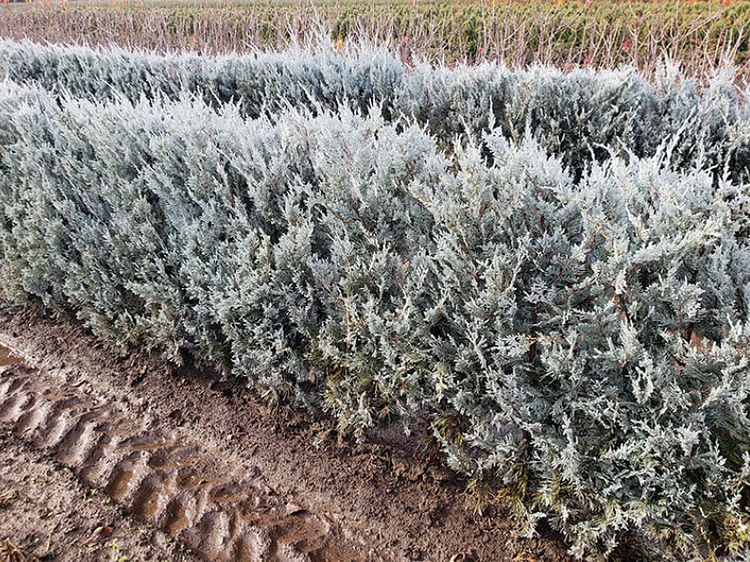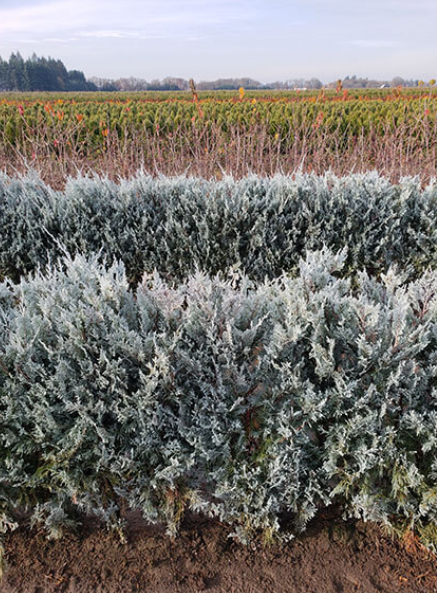Wichita Blue Juniper: A Touch of Blue Elegance in Your Landscape
When it comes to enhancing your landscape with year-round color and low-maintenance charm, few plants can match the Wichita Blue Juniper (Juniperus scopulorum ‘Wichita Blue’).
This exceptional evergreen shrub, known for its striking blue foliage and hardy nature, has become a favorite among gardeners and landscapers alike.
In this blog, we’ll delve into the captivating world of the Wichita Blue Juniper, uncovering its unique characteristics, care requirements, and the many reasons it’s celebrated as a go-to choice for adding a touch of blue elegance to your outdoor environment.

Introducing the Wichita Blue Juniper
The Wichita Blue Juniper is a cultivar of the Rocky Mountain juniper, native to the western United States. As the name suggests, its blue-green foliage is the standout feature, providing a refreshing and soothing contrast to the typical greenery in most landscapes. It’s a moderately slow-grower, typically reaching heights of 10 to 15 feet and spreading 4 to 6 feet wide, making it a versatile and attractive addition to gardens and outdoor spaces.
Year-Round Blue Beauty
One of the key selling points of the Wichita Blue Juniper is its year-round visual appeal. Its striking blue foliage maintains its vibrant color throughout all four seasons, providing a reliable and attractive backdrop for your landscape. Even in the heart of winter, when many other plants succumb to dormancy, the Wichita Blue Juniper stands proudly with its lively blue hue.
Low-Maintenance Delight
Caring for the Wichita Blue Juniper is refreshingly uncomplicated, making it an ideal choice for both novice and experienced gardeners. Here are some care requirements and tips for successful cultivation:
1. Ideal Growing Conditions: Plant your Wichita Blue Juniper in well-drained soil and a location that receives full to partial sun. It can tolerate various soil types and thrives in rocky or sandy soils.
2. Watering: Regular watering is essential during the establishment phase, but once established, this juniper is quite drought-tolerant. Deep, infrequent watering is preferable to shallow and frequent watering.
3. Pruning: Minimal pruning is required to maintain its natural shape, remove dead branches, or control its size. This juniper generally maintains an attractive form with little intervention.
4. Pest and Disease Resistance: Wichita Blue Juniper is typically resistant to most common pests and diseases, adding to its appeal as a low-maintenance plant.

Design Versatility
The Wichita Blue Juniper offers an array of design possibilities in your landscape:
1. Focal Points: Planting a Wichita Blue Juniper as a solitary specimen or in small groupings can create eye-catching focal points in your garden. Its distinctive blue color sets it apart from the surrounding greenery.
2. Border and Edging: Use this juniper to create attractive borders or edging for flower beds, walkways, or other garden features. Its blue-green foliage adds a touch of elegance to the garden’s periphery.
3. Ground Cover: In areas where you require ground cover, the low-growing Wichita Blue Juniper can be a fantastic choice. It helps control erosion and adds a delightful blue carpet to your landscape.
Conclusion
The Wichita Blue Juniper stands as a testament to nature’s ability to offer low-maintenance beauty and year-round color in your landscape. Whether you’re seeking to create a focal point, border, or ground cover, this evergreen shrub provides an enduring touch of blue elegance.
With its vibrant foliage and minimal care requirements, the Wichita Blue Juniper is a delightful addition to any garden, promising to infuse your outdoor space with a refreshing and tranquil atmosphere.
